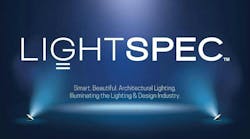I have mentioned before that I enjoy keeping up with the guest speakers on the “Get a Grip on Lighting” podcast. Recently, hosts Greg Ehrich and Michael Colligan spoke with Shirley Coyle, leader of Cree Lighting’s Canadian business unit, regarding all sorts of topics surrounding healthy lighting. I’d be remiss if I didn’t mention that Cree Lighting recently won a Sapphire Award for its Cadiant dynamic skylight in the Lighting for Health and Wellbeing category, as well as producing this year’s Illumineers honorees, Kory Liszt and Bob Rogers, for their software development work on that product. But don’t be turned off; the podcast explores many aspects of healthy lighting, not just the Cree Lighting product, and I’m not running a product pitch on it here.
Anyway, the podcast spans productivity, overall wellness, eye health, glare, flicker, standards, and appropriate design and functionality of circadian lighting, integrative lighting, or lighting for health and wellbeing. Whatever we decide to call it, Coyle emphasized the need to consider all the features of lighting that contribute to a better human experience in the built environment. However, there was a specific point I latched onto early in the conversation. It may challenge some notions about development and application efforts when it comes to lighting — and believe it or not, it is not unfamiliar. Could it be that more people are willing to say this publicly?
Doing no harm does not mean doing nothing.
“The reality is we’re putting lighting into spaces every day and people are already living and working and socializing and getting healthcare under the lighting that we’re putting out there,” said Coyle during the interview. “So we’re already having an impact. What’s been really amazing is finding out how big an impact, and it’s not just circadian lighting, it’s not just resetting our clock; there’s a lot more to it than that, as we find out.”
Here is where I point out that the sometimes controversial but always enlightening Stan Walerczyk has expressed these opinions a time or two. In past columns and indeed in yet another GAGOL podcast, he espoused the idea that especially in North America, implementation of tunable lighting has been slow to occur and that we can continue to use what we learn to improve delivery of quality light at the right times for the betterment of the human condition. And lighting researcher Octavio Perez has also countered that evaluating products in a real-world environment will produce more evidence-backed research on what metrics to apply to human-centric applications. Finally, Lighting Research Center director Mariana Figueiro contributed a well-reasoned Industry Insights piece to LEDs Magazine in which she categorically mapped out the advance of tunable spectral output combined with data collection and smart controls in an Internet of Things (IoT) scheme to deliver optimal light for people indoors.
What do you think — is the LED and solid-state lighting industry moving past debating about doing the right thing and ready to fully embrace healthy lighting concepts in product development and application?
You can find the podcast interview with Shirley Coyle at the Get a Grip on Lighting website.






